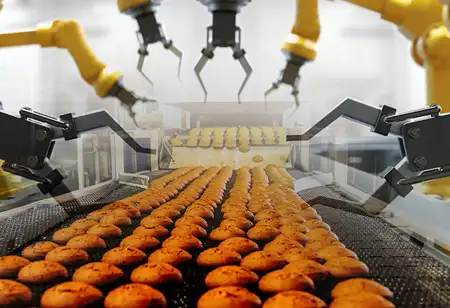THANK YOU FOR SUBSCRIBING
Be first to read the latest tech news, Industry Leader's Insights, and CIO interviews of medium and large enterprises exclusively from Food and Beverage Tech Review
What are the Recent Trends Affecting the Food Industry
Keeping abreast of the latest trends and developments in the food industry is crucial as it adapts to changing consumer preferences.

By
Food and Beverages Tech Review | Wednesday, May 31, 2023
Stay ahead of the industry with exclusive feature stories on the top companies, expert insights and the latest news delivered straight to your inbox. Subscribe today.
In the food industry, recent trends include supply chain problems and disruptions, natural and regional flavors becoming more popular, and Big Data powering business decisions.
FREMONT, CA: Keeping abreast of the latest trends and developments in the food industry is crucial as it adapts to changing consumer preferences. There have been significant changes in the food industry in 2023 that have shaped how we produce, distribute, and consume food. The Total Food Service has compiled a list of some of the most admired food industry trends for the following year, 2023:
Disruptions and problems in supply chains: A robust and resilient food supply chain has been highlighted by the covid-19 pandemic. Food businesses continue to face supply chain disruptions and logistical challenges in 2023. Businesses are adopting new innovations and tools to manage their supply chains more efficiently in order to overcome these challenges.
Companies are investing in blockchain technology to increase transparency and traceability in their supply chains. In addition, more businesses are turning to local and regional suppliers to reduce their reliance on global suppliers.
Restaurants and food producers should implement sustainable practices: In 2023, sustainability is of the most significant trends in the food industry. With consumers becoming more aware of the impact of food production on the environment, restaurants, and food businesses are demanding more sustainable practices. Restaurants and food producers are responding by reducing food waste, using renewable energy, and sourcing local and organic ingredients. By using eco-friendly packaging and reducing transportation emissions, more businesses are reducing their carbon footprint.
Many food businesses face higher input costs: A rising cost of labor, ingredients, and transportation has also affected the food industry in 2023. Inflation and supply chain disruptions have increased input costs. Many businesses have reduced costs or increased prices to maintain profitability. As a result of this trend, there may also be more innovation in product development and packaging to reduce costs.
Decisions are being made using big data by businesses: Businesses are increasingly relying on data analytics to make data-driven decisions in the food industry. More businesses are already using big data in 2023 to optimize their operations, reduce costs, and improve customer experiences. Businesses can forecast demand, optimize pricing, and personalize marketing campaigns using data analytics.
Natural and regional flavors are becoming more popular with consumers: Natural and regional flavors are becoming more popular among consumers. More businesses are focused on using natural ingredients and traditional cooking techniques in 2023. As consumers seek out new culinary experiences, there is a growing demand for authentic regional flavors and cuisines.
I agree We use cookies on this website to enhance your user experience. By clicking any link on this page you are giving your consent for us to set cookies. More info







